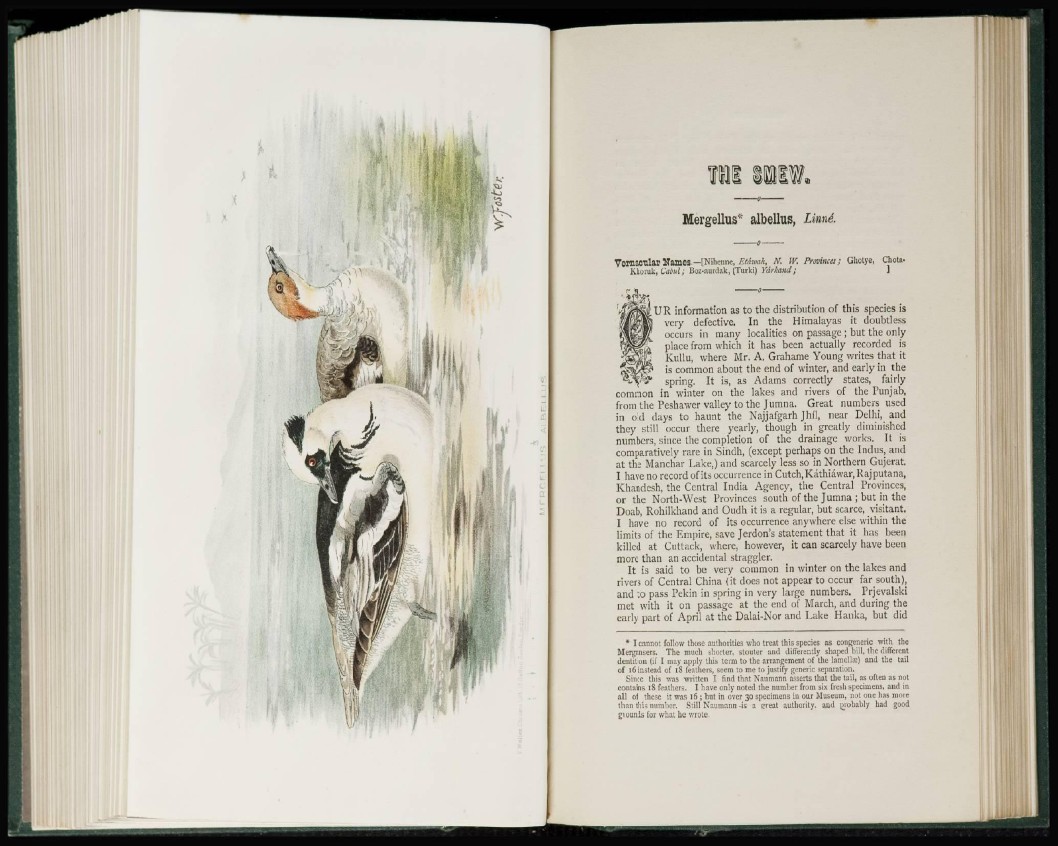
Mergellus* albellus, Limé.
VomaCTllar Names— [Nihenne, Etdwak, ¿V. IV. Provinces; Ghotye, Chota-
Khuruk, Cabul; Boz-auidak, (Turki) Yárkand; ]
•J^IS^UR information as to the distribution of this species is
very defective. In the Himalayas it doubtless
^ ^ ^ K occurs in many localities on passage ; but the only
r$"*=*^ place from which it has been actually recorded is
Kullu, where Mr. A. Grahame Young writes that it
W^CKS? *s c o m m o n about the end of winter, and early in the
^-y-^ spring. It is, as Adams correctly states, fairly
common in winter on the lakes and rivers of the Punjab,
from the Peshawer valley to the Jumna. Great numbers used
in old days to haunt the Najjafgarh Jhil, near Delhi, and
they still occur there yearly, though in greatly diminished
numbers, since the completion of the drainage works. It is
comparatively rare in Sindh, (except perhaps on the Indus, and
at the Manchar Lake,) and scarcely less so in Northern Gujcrat.
I have no record of its occurrence in Cutch, Kathiawar, Rajputana,
Khandesh, the Central India Agency, the Central Provinces,
or the North-West Provinces south of the Jumna ; but in the
Doab, Rohilkhand and Oudh it is a regular, but scarce, visitant.
I have no record of its occurrence anywhere else within the
limits of the Empire, save Jerdon's statement that it has been
killed at Cuttack, where, however, it can scarcely have been
more than an accidental straggler.
It is said to be very common in winter on the lakes and
rivers of Central China (it does not appear to occur far south),
and to pass Pekin in spring in very large numbers. Prjevalski
met with it on passage at the end of March, and during the
early part of April at the Dalai-Nor and Lake Hanka, but did
* I cannot follow those authorities who treat this species as congeneric with the
Mergansers. The much shorter, stouter and differently shaped bill, the different
dentition (if I may apply this term to the arrangement of the lamella:) and the tail
of 16 instead of 18 feathers, seem to me to justify generic separation.
Since this was written I find that Naumann asserts that the tail, as often as not
contains 18 feathers. I have only noted the number from six. fresh specimens, and in
all of these it was 16 ; but in over 30 specimens in our Museum, nut one has more
than this number. Still Naumann -is a Erreat authority, and rnobably had good
gtuunds for what he wrote